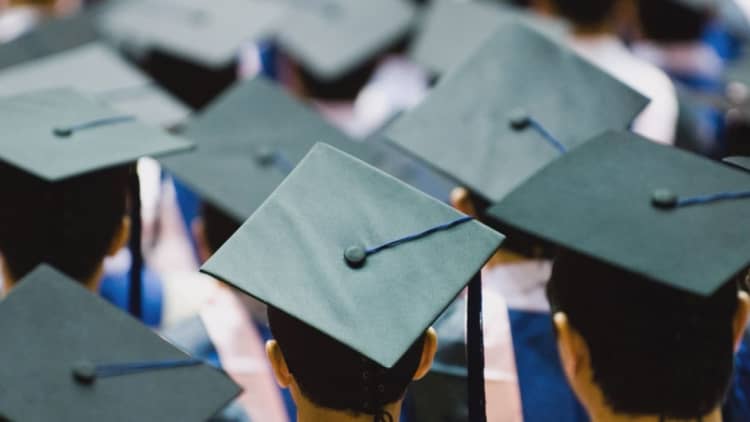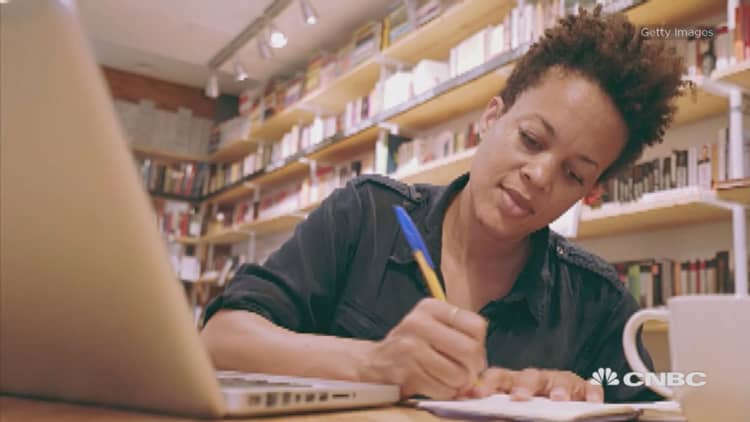Last year, CNBC tracked down one of the first people to qualify for public service loan forgiveness. "I feel pretty lucky," Kevin Maier, a tenured professor at the University of Alaska Southeast, said at the time. Apparently, he was.
The Education Department recently released data on how many borrowers' loans it has forgiven under the program — just 206. More than 41,000 people have applied.
Some 32,000 applications were denied because they didn't meet the program requirements and another nearly 12,000 were turned down for missing information.

The public service loan forgiveness program was signed into law by President George W. Bush in 2007 and allows certain not-for-profit and government employees to have their federal student loans canceled after 10 years of on-time payments.
With the help of student loan expert Mark Kantrowitz, we've addressed some of the most common misunderstandings about the program that trip people up.
These are the program's three basic requirements:
- Your loans must be federal direct loans.
- Your employer must be a government organization at any level, a 501(c)(3) not-for-profit organization or some other type of not-for-profit organization that provides public service.
- By the end, you need to have made 120 qualifying, on-time payments in an income-driven repayment plan or the standard repayment plan.
Yes, that's just the basics.
Among the other points you should know: under public service loan forgiveness, your debt is forgiven tax-free.
Federal Family and Education loans and private loans do not qualify. If you have a FFEL loan, you may be able to consolidate it into a direct loan (which is eligible), but keep in mind that if you have some direct loans, you'll be pulled back to day one of your 10-year timeline on those.
"Consolidating loans resets the clock on public service loan forgiveness," Kantrowitz said.
There are some 14 ways to repay your student loans, but to qualify for public service loan forgiveness you need to be enrolled in one of these four income-based repayment plans: income-contingent repayment, income-based repayment, pay-as-you-earn repayment and revised pay-as-you-earn repayment. (The standard repayment plan also qualifies, but under it you'd have paid off your loans in 10 years, anyway.)

Kantrowitz said some people assume they'll qualify for forgiveness after 10 years of payments. However, it's not about how long you've been paying but how many qualifying payments you've made. Maybe you took a leave from public service work, for example, halting the timer on your payments for a few months or even years. Again, it's after 120 qualifying payments that your loans will be eligible for forgiveness.
On that note, if you miss a payment, or if you switch jobs, you don't lose the qualifying payments you've racked up. Your payments don't need to be consecutive.
Does your employer count as a public service? It's complicated. The American Bar Association sued the Education Department after the government changed its terms on which work qualifies for the program, throwing some borrowers off the path to debt forgiveness. Last week, a judge ruled those tweaks were "arbitrary and capricious."
Some people wonder if their employer counts if it's a contractor for the government. Not always, Kantrowitz said. "Government contractors must themselves be qualifying organizations for their employees to qualify for public service loan forgiveness," he said.
In light of the confusion, all borrowers should fill out a so-called employer certification form at least once a year to confirm that their workplace makes them eligible. These forms will also enable you to keep records of your confirmed qualifying payments.
More and more companies are charging people to apply for loan forgiveness. You should not pay for this service, Kantrowitz said. "If you have to pay money to get money, it's probably a scam," he said. Even approach your servicer with skepticism, he said. "Take everything the lender says with a grain of salt."
Kantrowitz has put together a one-page checklist for public service loan forgiveness. The Education Department also recently released a help tool for those in the program. And CNBC has interviewed some of the people who have emerged successfully from the maze. You can read their tips here.
Have you had a bad experience with the public service loan forgiveness program? We want to hear from you. Please email me at annie.nova@nbcuni.com.
More from Personal Finance:
What you need to qualify for public service loan forgiveness
Government may forgive student loans if you meet demands
Education Dept. fails on public service loan forgiveness: Senators


